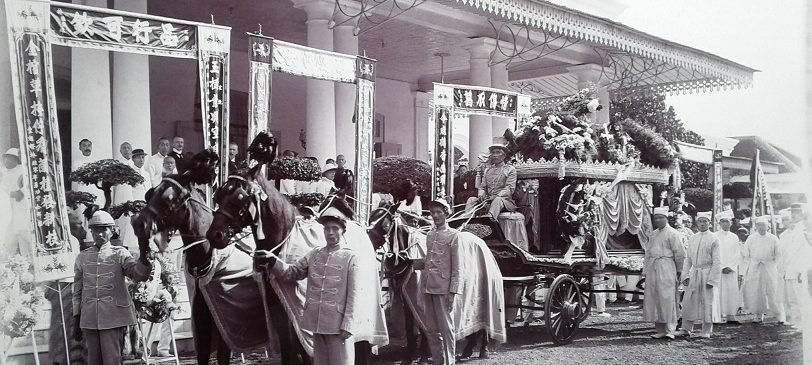Traditions & Culture
17 – Funeral Rites 3/6 : Cortege

Funeral of Han Hoo Tong, Pasuruan, 1919
photograph courtesy of Ing Lwan Taga
Friends and relatives of the decreased could send banners instead of wreaths during the wake as a token of sympathy. These scrolls were made of cloth with Chinese idioms and couplets on them. These banners often provided an indication of the status of the deceased: the more scrolls, the more respected, and thus the higher the status.
The messages on the scrolls honoured the deceased, often in the context of Confucian ideals of morals and ethics. For example, the horizontal banner on the extreme left in the photograph read “品⾏可欽”, which means “admirable character”. Banners might also carry messages about the good works and contribution of the deceased to family, society or country. The banners often formed part of the funeral procession.
The coffin was placed in a hearse decorated with funerary textiles and flowers. The hearse in the photograph was a Western-style, horse-drawn carriage complete with footmen. The footmen were bare-footed as a sign of mourning.
The chief mourners of the funeral could be seen at the extreme right – these were a group of men with headscarves and dressed in a kimono-like robe of “kain blacu”, a type of coarse, unbleached cotton. These funeral clothing were worn inside out with seams and underside of hems showing. Thus, for the superstitious, it is considered bad luck when they accidentally put on their clothing inside out.
Christopher Ng, Januari 2019
This article is part number 3 of a series of 6 articles regarding Chinese Indonesian funeral rites (in the Dutch East Indies)
Referenes:
Tan, G.L. (1963): The Chinese of Sukabumi: a study of social and cultural accommodation, New York: Monograph Series.
Wibisono, L., Northmore, M., Tjahyadi, R. And Jonathan, M. (eds) (2012): Indonesian Chinese Peranakan: a cultural journey, Jakarta: Indonesian Cross-Cultural Society and Intisari


